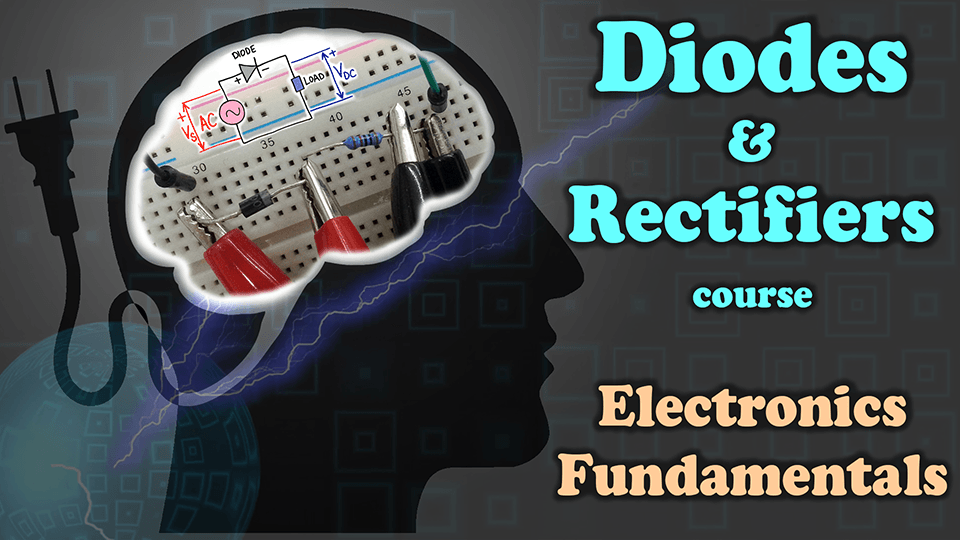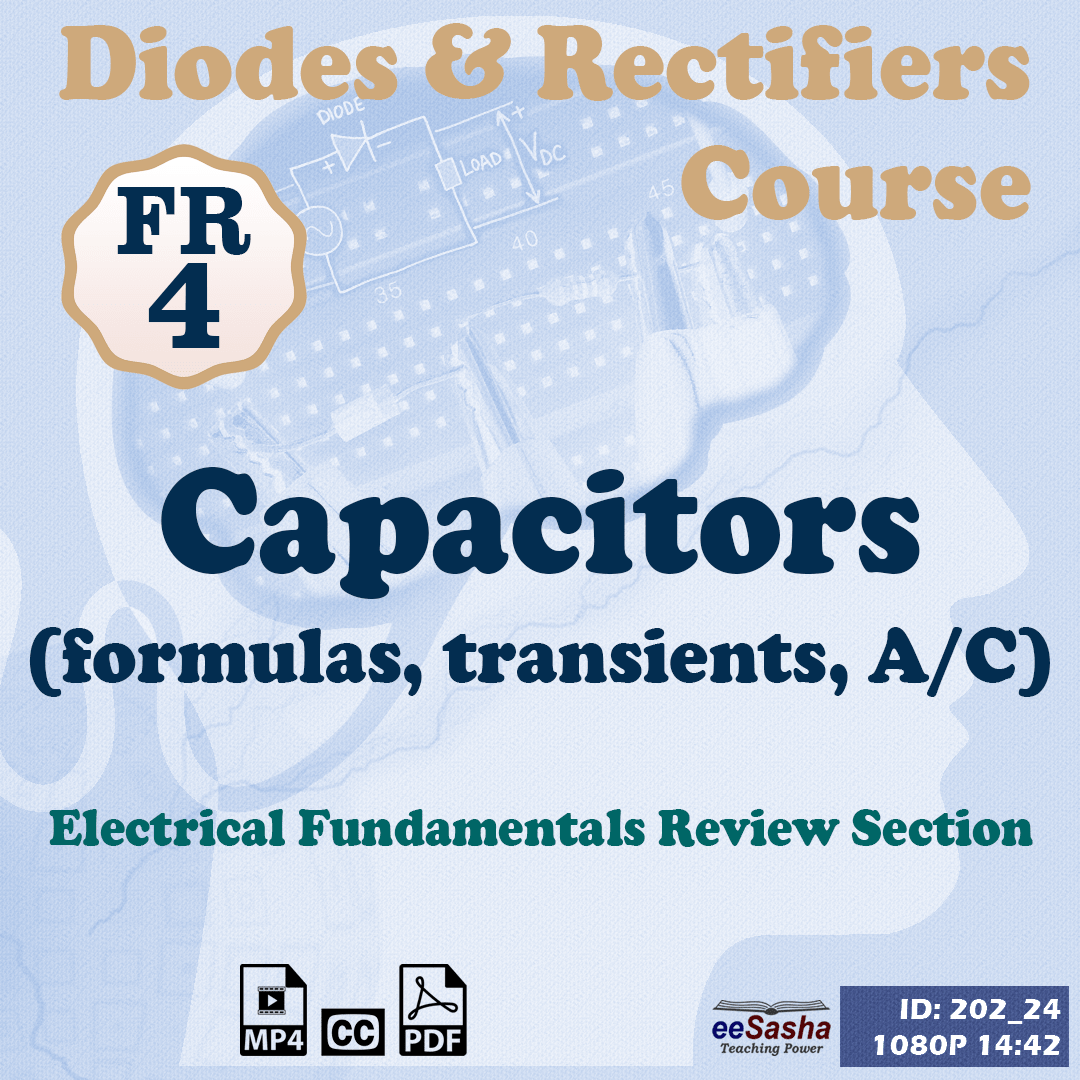Capacitors
$9.79
Capacitors Video Lesson
Description
Capacitors Video Lesson
Video Lesson from Electricity Fundamentals Review Section of Diodes & Rectifiers Course
The review of fundamental electrical engineering components and concepts:
- Capacitor as an energy storage component
- Charge, voltage and capacitor’s capacitance
- Formulas that describe capacitor behavior
- Transient processes that involve capacitors
- Capacitors during steady state
- Capacitive reactance of capacitors in A/C circuits

Electronic Product Information
| Lesson Title: | Capacitors |
| Part of a Section: | Electricity Fundamentals Review |
| Part of a Course: | Diodes & Rectifiers Course |
| Published: | September 2020 |
| Author: | Sasha Jakovljevic |
| Instructor: | Sasha Jakovljevic |
| Duration: | 14:42 min |
| Quality: | 1080P HD |
| Contents: | .mp4 Video file .srt Captions/Subtitle file .pdf Resource Slides |
Detailed Product Information
Capacitors (14:42)
Capacitors are very important electrical components. They are used in many electrical circuits, from small electronic devices and all the way to large power engineering apparatus (like banks of high voltage capacitor cans). We also need to understand capacitors in order to be able to follow Diodes & Rectifiers course (especially smoothing out output voltage of rectifiers). In this video lesson, we review the necessary knowledge related to capacitors:
- Capacitor as an energy storage component
- Formulas that describe behavior of capacitors
- Relevant capacitor related electrical quantities
- Transient processes that involve capacitors and
- Capacitive reactance of capacitors in A/C circuits
We introduce capacitor as an energy storage component first. We answer:
- In what types of circuits do we encounter capacitors?
- Why we cannot use Ohm’s Law for capacitors (at least not in a general case)?
- What is capacitance of a capacitor?
- How much is a current that flows through a capacitor in a DC circuit?
- What is the condition for voltage of a capacitor in order to have a current flowing thru a capacitor?
- How much charge can be stored in a capacitor and how can that amount be increased?
- What is the relationship between capacitor’s voltage and the amount of charge stored in it?
- What is the most fundamental difference between capacitors and resistors?
- In what form does the capacitor store electric energy?
- Which formulas can be used to calculate energy stored in a capacitor?
We cover the most important capacitor formulas that describe behavior of capacitors. We address:
- Fundamental formulas that relate capacitor’s voltage and capacitor’s current
- Derivative formula for calculating current of a capacitor (based on its voltage)
- Integral formula for calculating voltage of a capacitor (based on its current)
- Formula for the amount of charge that can be stored in a capacitor and
- Three formulas for energy stored in a capacitor (based on its capacitance, voltage and/or charge)
Next, we analyze capacitor transients that are processes in which current and voltage of a capacitor change due to a change of state in electrical circuits. Here we answer:
- Why is it important to consider the relationship between capacitor’s voltage and its charge?
- Why does a capacitor resist change in voltage?
- Why does it take time for capacitor’s voltage to increase or decrease?
- What are the two types of capacitor transients and how do we call/identify them?
- What are the initial conditions relevant to transient processes?
- How does a “charged” capacitor behave as a source in the circuit?
- Which formulas describe change of capacitor’s voltage and current during a transient?
- Why do we use exponential functions to describe capacitor transients?
- What is the resistor-capacitor (RC) circuit time constant and how do we calculate it?
- How much time does it take for a transient to finish (for practical purposes)?
When the transient is over, circuit reaches steady state. We look into the behavior of a capacitor during steady state:
- What formulas can we use in steady state and why is steady state easy to analyze?
- What can we conclude about capacitor during steady state?
- How do we treat capacitors during steady state and how do we simplify the circuit for easy analysis?
The last concept we cover is capacitive reactance of a capacitor in A/C circuit. We answer the following:
- How do we define capacitive reactance?
- Is capacitive reactance real or a complex number? What about the impedance?
- Is capacitive reactance positive or a negative number?
- What is the formula for calculating capacitive reactance?
- What is the relationship between AC circuit frequency and angular frequency?
- What is a common mistake students make with respect to capacitive reactance?
This video lesson addresses just about enough so you can solve some basic problems with capacitors and so you can also follow the course material as we progress through Diodes & Rectifiers course.
Only logged in customers who have purchased this product may leave a review.







Reviews
There are no reviews yet.